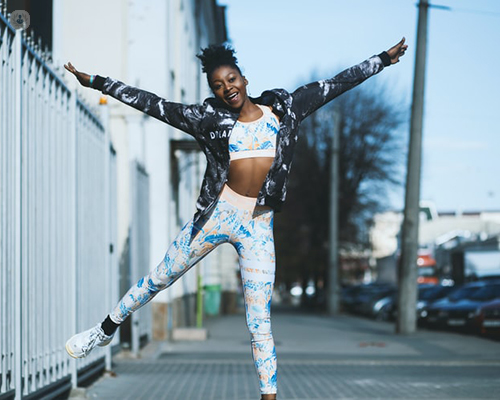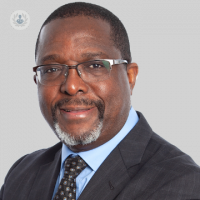What should I expect after a tummy tuck (abdominoplasty)?
Written by:If you are considering having a tummy tuck (abdominoplasty), you may wonder what happens to your body after the surgical procedure. Professor Charles Malata is a British and American-trained consultant plastic surgeon who is highly experienced in performing tummy tuck operations. Here he explains in depth what you can expect following the operation, from the hospital stay to getting back to your normal daily routine.

What happens immediately after a tummy tuck?
Following a tummy tuck, you can expect the following:
- The operation to reduce the size of and tighten the abdomen typically lasts between two to four hours under general anaesthesia (GA).
- The hospital stay is between one to three days depending on the output from the drains, pain control, size of the abdominal reduction and what other surgery (for example breast lift/breast reduction, arm or thigh lift) is done at the same time.
- On recovery from the anaesthetic you will have two abdominal drains, tight bandages on the lower abdomen and a supportive binder and girdle/ corset. The leg compression stockings and daily blood-thinning injections reduce the risk of forming blood clots in the legs.
- Painkillers, antibiotics and any anti-nausea drugs are given intravenously for one to two days.
- On the day after surgery, the nurse will help you get out of bed, sit out of bed into a chair, and walk around in your room to reduce the risk of developing blood clots in your legs or chest infection. You can have drinks and later progress to a soft diet as tolerated.
What happens in the days after a tummy tuck?
- A stool softener is given routinely for five days. You will also be shown mobility and breathing exercises by the nurses and/ or physiotherapists.
- From the second day, you should be able to walk to the toilet with help and take your pain killers and antibiotics by mouth. The dressings are changed to inspect the wound and the belly button, and the supportive garments are then re-applied.
- The drains are removed on day one to two prior to your discharge home. An extra day in the hospital is rarely required and if there is prolonged drainage, you can go home with drains in.
What happens after a tummy tuck when you get home?
- When you get home please avoid any strenuous activity for the first three to four days. You should, however, move around the house and continue the deep breathing exercises commenced in hospital. Absolutely no smoking or vaping is allowed because of the high risk of wound healing, clotting and chest complications.
- Please take the pain medication as prescribed and complete the course of any prescribed antibiotics.
- When coughing, support your abdomen with a towel or pillow for comfort. Please walk slightly bent at the tummy until the pain allows you to straighten up and do not attempt to do too much at home.
- Although you can shower after 48 hours, please avoid soaking the wounds in a bathtub as this increases the risk of infection. After showering, pat the dressing/incision dry. Do not use a hair drier on it.
- The supportive girdle and binder can be taken off for showering or adjusted if it is too loose/ uncomfortable. Please leave the inside dressings undisturbed until your review visit.
What's involved in a check up after a tummy tuck?
- Although all the stitches will be 'dissolving' (absorbable), my nurse or I need to inspect your wounds five to ten days after surgery. New 'butterfly stitches' will then be reapplied.
- If you are worried about excessive pain, swelling, tightness, bruising/bleeding or discharge, fever, soaked dressings, coughing bouts, constipation, vomiting, dizziness, unclear instructions, etc. then please contact me using my 24-hour emergency cell phone number given to you at your consultation. Some discomfort and tightness of your abdominal wall are, of course, expected.
- The supportive garments must be worn most of the time in the first four to six weeks, taking them off only to have a shower. They support your tissues and make you feel more secure.
- The next planned visits will be at two weeks; then six weeks postoperatively at which time the wounds will be largely healed, and you should be able to return to work and start massaging the scars.
- Most patients can drive (and engage in sex) by three to four weeks after surgery and are able to return to work at three to six weeks depending on the needs of their job.
- The next and last planned visit will be five to six months after surgery to check the final results. I will, however, be delighted to see you at any other time free of charge.
- In the unlikely event that you feel that a revisional or touch-up surgery is required on any aspect of your surgery, please be advised there may be additional expenses incurred (hospital, anaesthetic and surgical).
- Should you wish to consult me for any other cosmetic surgery, the consultation will be free. Should a friend or a family member wish to consult with me for any cosmetic surgery a courtesy 50 per cent discount on the consultation fee is extended to them.
You can book an appointment with Professor Malata via his Top Doctor’s profile for any of your cosmetic surgery needs, including breast augmentation, nose job, facelift and tummy tuck.


